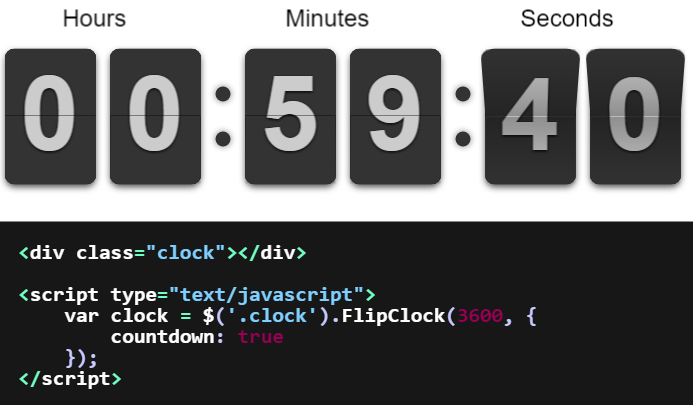

- #WORKER FLIPCLOCK JS UPDATE#
- #WORKER FLIPCLOCK JS CODE#
- #WORKER FLIPCLOCK JS OFFLINE#
- #WORKER FLIPCLOCK JS DOWNLOAD#
With precaching, key static assets and materials needed for offline access can be downloaded and stored in a Cache instance. Precaching is the process of caching assets ahead of time, typically during a service worker's installation. Each of these is central to the benefits a service worker can provide. The interaction between a service worker and a Cache instance involves two distinct caching concepts: precaching and runtime caching.
#WORKER FLIPCLOCK JS CODE#
Because promises also underpin async and await, those JavaScript features can also be used to simplify service worker (and Workbox!) code for a better developer experience. Particularly, the ability to run callbacks when network requests are dispatched is vital in providing that sought-after reliability and speed.ĭoing asynchronous work in JavaScript involves using promises. All of these events can potentially interact with the Cache interface. When a service worker detects a network request.Įvents can be registered using a familiar addEventListener API.Service workers accommodate this asynchronicity through an event-driven API, using callbacks for events such as: The time involved is varied and indeterminate. It takes time to request an asset, for a server to respond to that request, and for the response to be downloaded. Transferring data over the network is inherently asynchronous. Before diving into Workbox, there will be a review of a few caching strategies and code that makes them work. Caching strategies make offline experiences possible, and can deliver better performance by side-stepping high-latency revalidation checks the HTTP cache kicks off. Stream partial content from the network and assemble it with an app shell from the cache to improve perceptual performance.Įach one of these is an example of a caching strategy.

#WORKER FLIPCLOCK JS UPDATE#

The Cache interface can be accessed within the service worker scope and within the scope of the main thread. # Access to a JavaScript-driven caching APIĪn indispensable aspect of service worker technology is the Cache interface, which is a caching mechanism wholly separate from the HTTP cache. After a service worker is installed and activated, it controls the page to offer improved reliability and speed. On the very first visit to a web page that installs a new service worker, the initial visit to a page provides its baseline functionality while the service worker downloads. The service worker lifecycle is similar, but with a progressive enhancement approach. The app is ready to use and can be launched.
#WORKER FLIPCLOCK JS DOWNLOAD#

Thus, these first few bits of documentation will cover that underlying technology before getting into Workbox specifics. However, because service workers solve hard problems, any abstraction of that technology will also be tricky without understanding it. Workbox makes service workers easier to use. Service workers offer incredible utility, but can be tricky to work with at first.


 0 kommentar(er)
0 kommentar(er)
